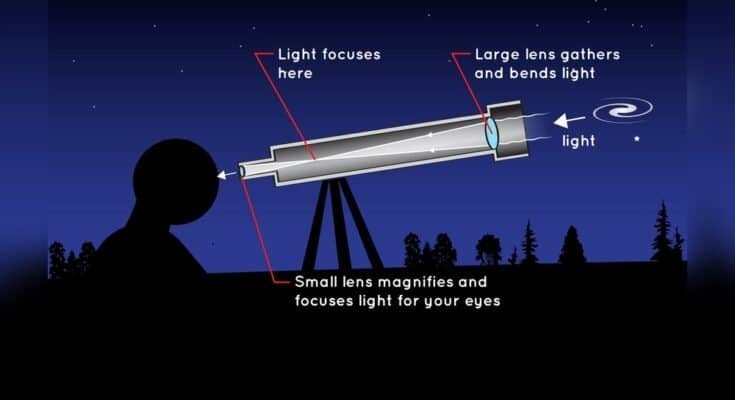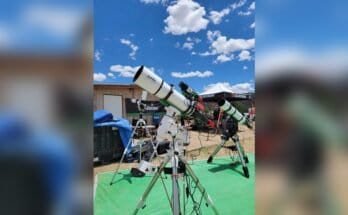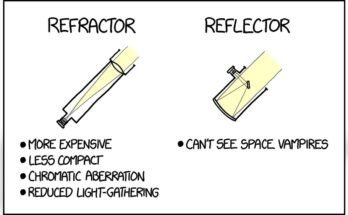Have you ever looked up at the night sky and wondered how a refracting telescope brings distant stars and planets into clear view? Understanding how this simple yet powerful device works can change the way you see the universe—and spark your curiosity like never before.
You’ll discover the secrets behind the lenses, how they bend light, and why refracting telescopes have fascinated stargazers for centuries. Get ready to unlock the magic behind every sharp, glowing image you see through the eyepiece. Keep reading—you won’t want to miss how this amazing tool turns tiny points of light into breathtaking sights.
Basic Principles
The basic principles of a refracting telescope involve bending light to form clear images. This type of telescope uses lenses to focus light from distant objects. Understanding these principles helps you see how the telescope works.
Light Refraction Explained
Refraction means bending light as it passes through materials. Light changes speed when entering glass from air. This change causes the light to bend or refract. The bending helps focus light to a point.
In a telescope, refraction directs light rays to gather and concentrate. The focused light creates a sharp image. Without refraction, the light would scatter and blur the view.
Role Of Lenses
Lenses are the main parts that bend light in a refracting telescope. The large lens at the front is called the objective lens. It collects light from far objects and bends it inward.
The eyepiece lens then magnifies the focused light. This lens makes the small image appear larger and clearer. Together, these lenses help you see distant stars and planets.
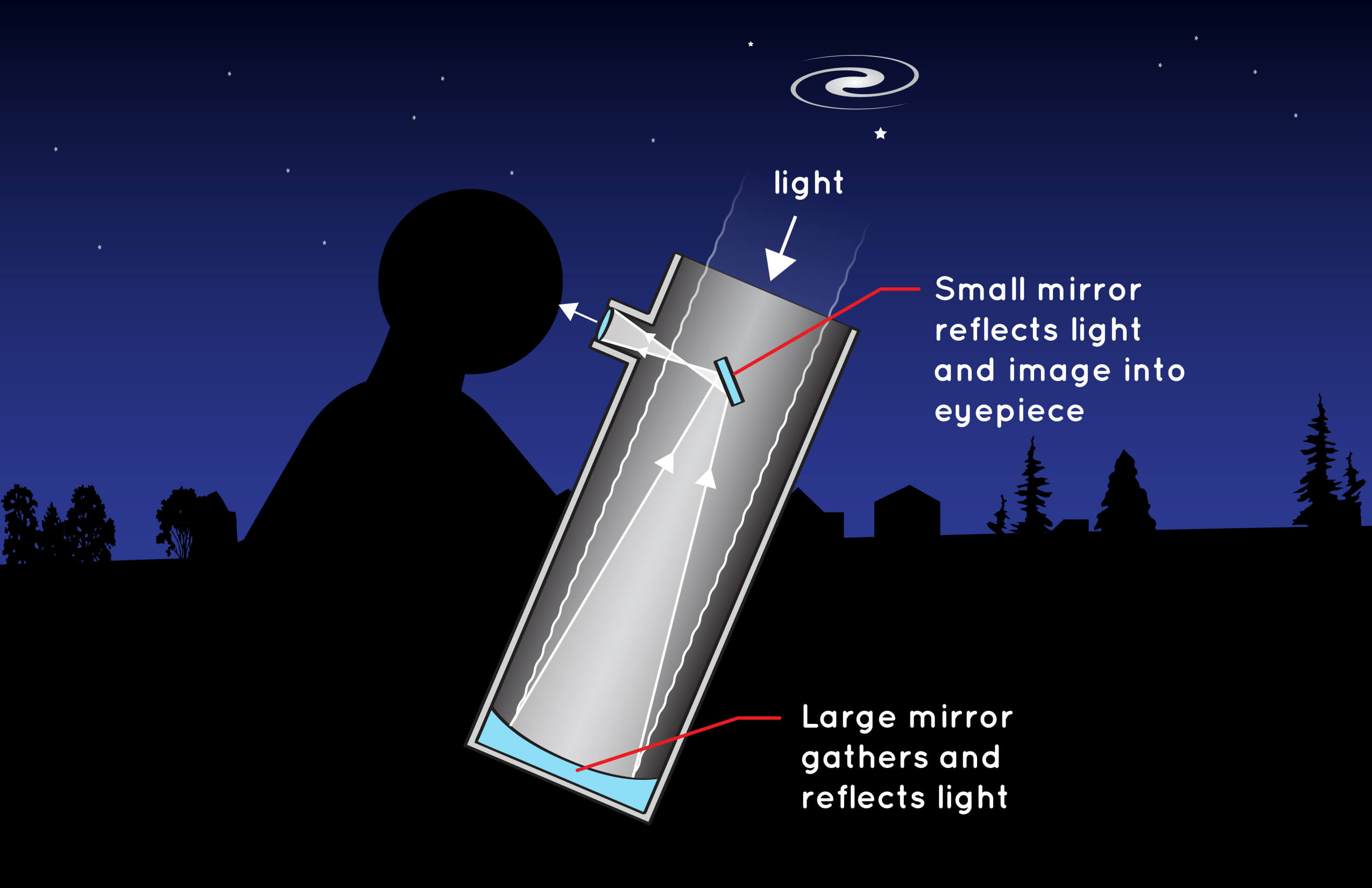
Main Components
The main parts of a refracting telescope help it gather and focus light. Each part plays a key role in making distant objects clear and bright. Understanding these components makes it easier to see how the telescope works.
These parts work together to bring faraway stars and planets into view. They guide the light through the telescope and into your eye.
Objective Lens
The objective lens is the large glass at the front of the telescope. It collects light from distant objects. This lens bends, or refracts, the light to create a focused image. The bigger the objective lens, the more light it can gather. This helps to see faint and far objects clearly.
Eyepiece Lens
The eyepiece lens sits at the back of the telescope. It magnifies the image made by the objective lens. This lens makes the image look bigger and closer. You look through the eyepiece to see details of stars or planets. Different eyepieces can change the zoom level.
Tube Structure
The tube holds the lenses in place and keeps light from leaking in. It keeps the lenses aligned for a sharp image. The tube also protects the lenses from dust and damage. A sturdy tube helps keep the view steady and clear.
Image Formation
A refracting telescope forms images by bending light through its lenses. The main lens focuses light to create a clear, magnified view. This process helps us see distant objects in space more clearly.
Light Path Through Lenses
A refracting telescope forms images using lenses. Light from a distant object enters the telescope through the large front lens, called the objective lens. This lens bends the light rays and brings them closer together. The light then travels through the tube to a smaller lens near the eye, called the eyepiece. The eyepiece lens bends the light again to make the image clearer and easier to see.
The bending of light, or refraction, is key. It helps focus the light rays to a single point. This point is where the image forms inside the telescope. The quality of the lenses affects how sharp and bright the image appears.
Focus And Magnification
Focus happens when the light rays meet at one point after passing through the lenses. Adjusting the distance between the lenses changes the focus. This adjustment makes the image sharp and clear. Without proper focus, the image looks blurry and hard to see.
Magnification is the process of making the image look bigger. The eyepiece lens controls this. Different eyepieces offer different levels of magnification. Higher magnification allows you to see more details but may reduce image brightness. The right balance of focus and magnification is important for a good view.
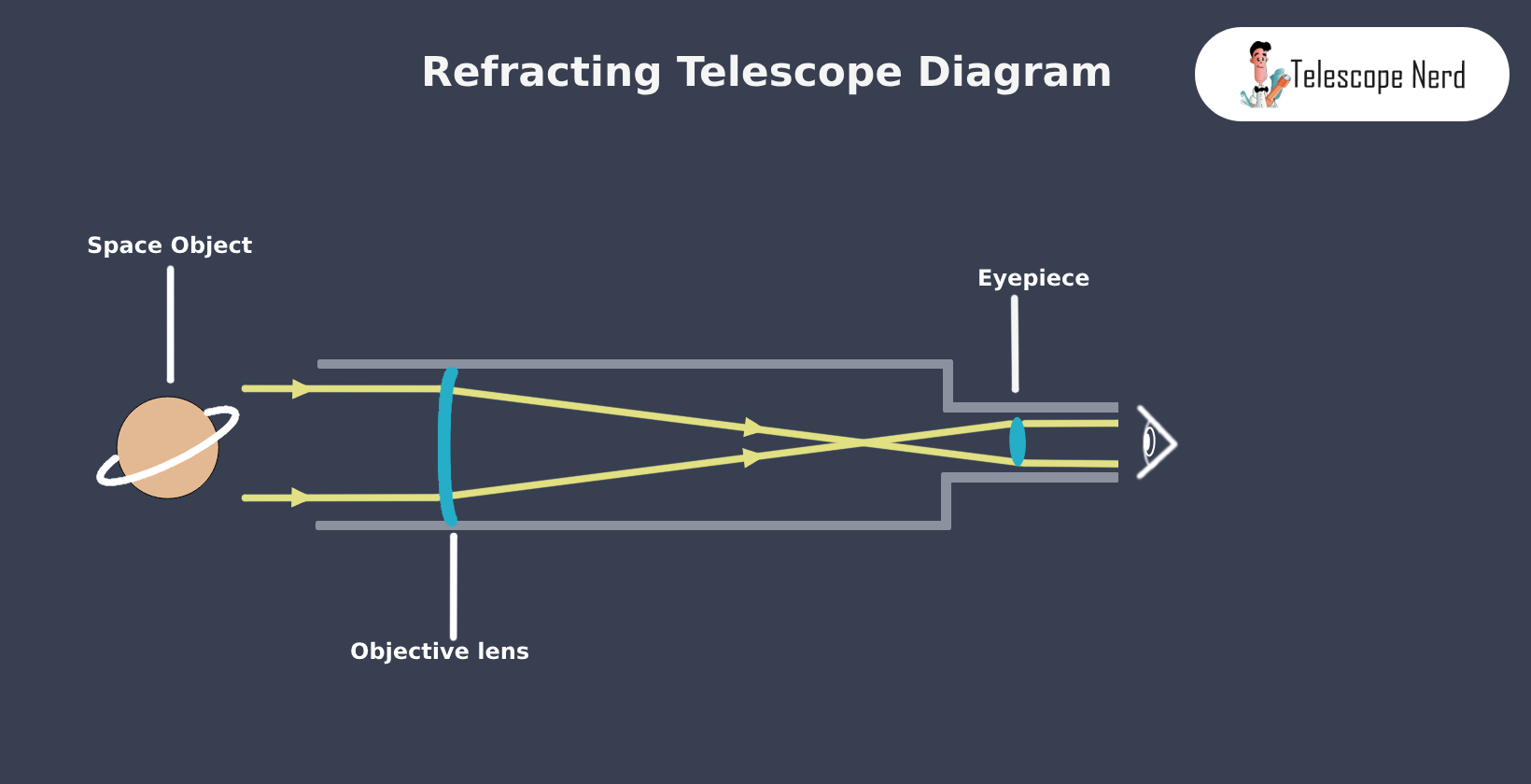
Advantages Of Refracting Telescopes
Refracting telescopes offer several key advantages that make them popular for beginners and experienced users alike. Their design focuses on clarity and ease of use. These benefits help users enjoy clear views of distant objects in the sky. Understanding these advantages shows why many choose refracting telescopes for stargazing and learning.
Sharp Image Quality
Refracting telescopes use lenses to bend light and form images. This design reduces image distortion and provides sharp, clear views. The lenses keep colors true, avoiding the blurring seen in some other telescopes. This sharpness makes it easier to see details on planets and the moon. Users can appreciate crisp and bright images without extra adjustments.
Low Maintenance
Refracting telescopes have sealed tubes that protect lenses from dust and dirt. This feature reduces the need for frequent cleaning and repairs. Unlike other types, they do not require regular alignment of mirrors. Their sturdy build helps maintain performance over time. This low maintenance makes refracting telescopes ideal for casual users and beginners.
Common Limitations
Refracting telescopes have helped many people explore the night sky. They use lenses to bend light and create images. Despite their usefulness, these telescopes have some common limitations. Understanding these limits helps users know what to expect.
Chromatic Aberration
Chromatic aberration happens because lenses bend different colors of light unevenly. This makes stars and planets show colored edges. The image looks blurry or fringed with colors. It lowers the sharpness and clarity of what you see. Special lens designs can reduce this effect but do not remove it fully.
Size And Cost Constraints
Large lenses are hard to make and very expensive. Bigger lenses also bend or sag under their own weight. This changes the image quality. Because of this, refracting telescopes are usually smaller than reflecting types. Smaller size limits how much detail you can see in space. Costly lenses mean many people cannot afford very powerful models.
Historical Impact
The refracting telescope has shaped our view of the universe. It brought distant stars and planets closer to us. Its historical impact changed astronomy and science forever. The telescope helped humans understand space better. This section explores its key moments in history.
Galileo’s Discoveries
Galileo Galilei used a simple refracting telescope in 1609. He saw the moons of Jupiter for the first time. This showed not everything moves around Earth. He also observed the phases of Venus and the surface of the Moon. These findings challenged old beliefs and started modern astronomy.
Evolution Over Time
The refracting telescope design improved over centuries. Lens quality and size increased, making images clearer. Scientists built bigger telescopes to see farther into space. These changes helped discover new planets and stars. The telescope became a vital tool for space exploration and research.
Modern Uses
Refracting telescopes remain useful in many modern settings. Their simple design and clear images make them popular for various tasks. People rely on these telescopes beyond just stargazing. They serve practical and educational purposes today.
Astronomy Applications
Amateur astronomers use refracting telescopes to observe planets and stars. These telescopes offer sharp views of the moon’s surface. They work well for viewing bright objects like planets. Many hobbyists enjoy their ease of use and low maintenance. Some small observatories use refractors for teaching and public viewing events. They help bring the universe closer to everyday people.
Educational Tools
Schools and science centers use refracting telescopes to teach optics and space science. These telescopes help students understand light and lenses. Students get hands-on experience with real tools. This practical learning boosts interest in science. Refractors are durable and simple, perfect for classrooms. They allow beginners to explore astronomy with clear, bright images.
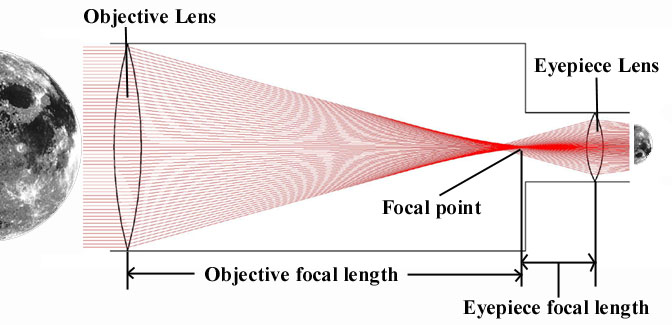
Frequently Asked Questions
What Is The Main Function Of A Refracting Telescope?
A refracting telescope uses lenses to bend light and form clear images. It magnifies distant objects by focusing light through an objective lens and an eyepiece lens. This design helps astronomers observe planets, stars, and other celestial bodies with clarity.
How Does The Objective Lens Work In A Refracting Telescope?
The objective lens gathers and bends incoming light to a focal point. It creates a real image of the distant object. This image is then magnified by the eyepiece lens for detailed viewing, allowing clear observation of faraway objects.
Why Are Refracting Telescopes Preferred For Planetary Observation?
Refracting telescopes provide sharp, high-contrast images with minimal distortion. Their sealed tube design prevents dust and air currents from affecting image quality. This makes them ideal for viewing planets and the moon with fine detail.
What Limits The Size Of A Refracting Telescope?
Lens size and weight limit refracting telescopes. Large lenses can sag under their weight, causing image distortion. Manufacturing big, flawless lenses is costly and complex, restricting the maximum practical size of refracting telescopes.
Conclusion
A refracting telescope uses lenses to bend light and form images. It gathers light from distant objects and focuses it to a point. This simple design helps us see stars and planets clearly. The lens size affects how much detail you can see.
With this telescope, you can explore the night sky easily. Understanding how it works makes stargazing more fun. Keep exploring and enjoy the wonders above!
